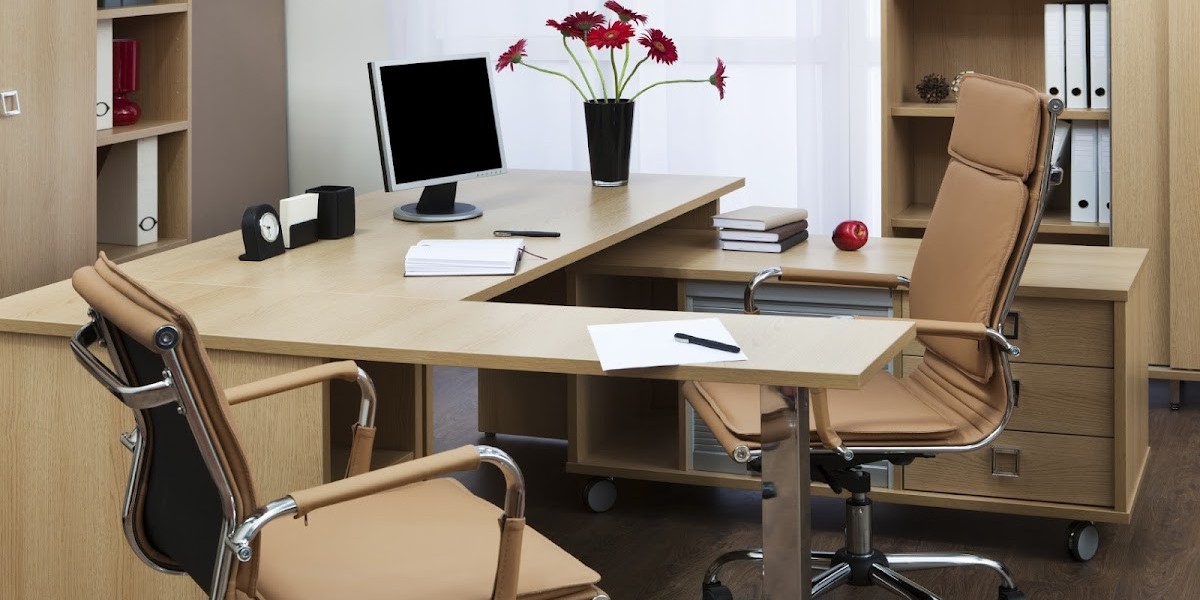Introduction:
Choosing the right material for your office table is key to creating a workspace that meets your aesthetic, functional, and maintenance needs. From classic wood to modern metal and glass, each material offers unique benefits and considerations. In this blog, we’ll explore popular office table materials and help you decide which one is best suited for your workspace.
Popular Office Table Materials:
Wood:
Wood is one of the most traditional and versatile materials for office tables, offering a warm, natural look that fits a variety of styles. From solid oak and walnut to lighter woods like pine and maple, wooden tables provide a sturdy and timeless feel. They are durable and can be refinished, making them a long-term investment.Pros: Warm, timeless, durable, can be refinished.
Cons: Can be heavy, requires maintenance to prevent scratches.
Metal:
Metal office tables are popular in modern and industrial designs, offering a sleek and minimalist aesthetic. They are incredibly durable, resistant to damage, and easy to clean. Metal tables are often paired with wood or glass tops to add contrast and balance.Pros: Sturdy, easy to maintain, modern look.
Cons: Can feel cold, may scratch over time.
Glass:
Glass office tables bring a contemporary, airy feel to any space. They create a sense of openness and can make small rooms feel larger. Tempered glass tables are strong and heat-resistant, though they do require regular cleaning to keep smudges and fingerprints at bay.Pros: Sleek, modern, visually lightens a room.
Cons: Prone to smudges, can feel fragile, requires careful cleaning.
Laminate:
Laminate tables offer the look of wood, stone, or other finishes at a fraction of the cost. They are easy to clean, resistant to scratches, and available in various styles. Laminate is a great option for those seeking durability on a budget.Pros: Affordable, low maintenance, versatile.
Cons: Less durable than solid wood, edges may peel over time.
Bamboo:
Bamboo is an eco-friendly choice that adds a unique, natural element to your office. It is lightweight, sustainable, and has a distinctive look. Bamboo tables are durable and offer a more environmentally conscious option for those looking to reduce their carbon footprint.Pros: Sustainable, lightweight, distinctive look.
Cons: Can be less durable than traditional hardwoods.
Reclaimed Wood:
Reclaimed wood tables use salvaged materials, often from old barns, factories, or other structures, giving each piece a unique story and character. These tables are environmentally friendly and add a rustic or vintage touch to any workspace.Pros: Eco-friendly, unique character, high-quality craftsmanship.
Cons: Can be expensive, may have imperfections.
How to Choose the Right Material:
Consider Your Style: Match the material to your office’s decor style—wood for traditional, metal for industrial, and glass for modern.
Think About Maintenance: Choose a material that suits your lifestyle. For example, glass requires more frequent cleaning, while wood needs occasional refinishing.
Evaluate Durability Needs: For high-traffic workspaces, durable materials like metal or laminate are ideal. For a home office, wood or bamboo might offer the right balance of aesthetics and function.
Conclusion:
The material of your office table plays a significant role in its look, feel, and functionality. Whether you choose the warmth of wood, the sleekness of metal, or the airy appeal of glass, selecting the right material will enhance your workspace’s overall aesthetic and durability. Consider your needs, style, and maintenance preferences to find the perfect office table material that supports your work environment.









